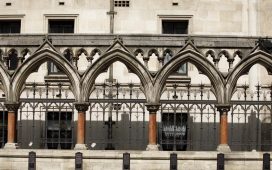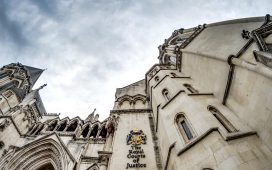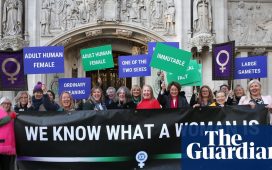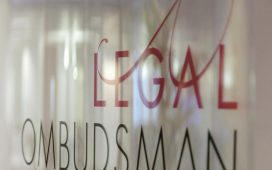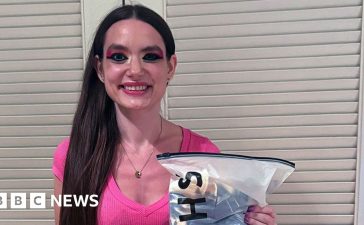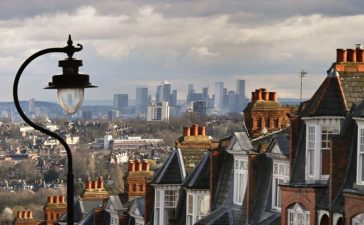A quarter of a century ago, in the midst of the war in Kosovo and in its aftermath, senior international figures beat a path to the door of Hashim Thaçi, the Kosovo Liberation Army commander who would later become the country’s most prominent politician.
Thaçi hosted the former UK prime minister Tony Blair, one of the KLA’s most prominent international supporters. He met the late Liberal Democrat leader Sir Paddy Ashdown for a beer. Madeleine Albright, then US secretary of state, was a vocal admirer, and Hillary Clinton met Thaçi later when she occupied the same position.
Last week, however, Thaçi – who served as both prime minister and president of Kosovo – appeared in the dock of a Hague court alongside three prominent colleagues, all accused of war crimes committed during the conflict, including complicity in the murder of 102 people.
As prosecutors presented their case against Thaci and fellow defendants Rexhep Selemi, Kadri Veseli and Jakup Krasniqi – all senior figures in the KLA’s leadership during the war against Serb forces from 1998 to 1999 – they described an alleged campaign of murder, torture and repression against opponents and members of ethnic minorities directed by the four men.
It is alleged that the victims included ethnic Albanian supporters of the rival LDK political party, Serb civilians and Roma, who were held without due process in inhuman conditions at KLA headquarters, subjected to torture and, on a number of occasions, executed.
The trial, which opened two years after the men surrendered to the court’s jurisdiction and is expected to run for up to six years, already seems certain to rewrite the history of the conflict.
The proceedings, deeply unpopular in Kosovo and neighbouring Albania, recall the period of brutal conflict between 1998 and 1999 where both Serbian and Kosovan armed organisations committed war crimes in the context of the KLA’s armed uprising and Belgrade’s military response.
In a war fought at first in and around the villages and small towns in the KLA’s Drenica mountain stronghold, Thaçi, known by the nom de guerre of “Snake”, was a political representative on the KLA’s general staff.
Then in his late 20s, he stood out among his fellow commanders for his intelligence and confidence, later representing the KLA at the failed peace negotiations in Rambouillet, France, in early 1999 that preceded Nato’s intervention in the conflict.
It was in these same villages, however, with their houses and small farms scattered among mountain pastures, the indictment alleges, that the KLA and its commanders held its prisoners in often grim conditions, subjecting them to beatings and other indignities, and sometimes killing them.
Among the catalogue of alleged crimes unveiled last week, one in particular stands out: the events that took place around 26 July 1998 in the midst of a Serb offensive.
Then, the charging document claims, KLA members “took approximately 30 detainees from Llapushnik/Lapušnik into the nearby Berishë/Beriša mountains and divided them into two groups. One group was untied and released; the detainees in the other group were shot and killed.”
If the trial in The Hague is striking, it is because Nato’s intervention in Kosovo was defined as a response to serious war crimes, not least the Račak massacre by Serbian forces in January 1999, which redefined the scope of military intervention on humanitarian grounds.
Even then, however, it was clear that both sides were targeting civilians, even if there was a difference of scale, not least the large-scale military action launched by Belgrade after the start of the Nato bombing that sent hundreds of thousands of civilians fleeing from Kosovo into neighbouring countries.
For some, including western diplomats, who encountered Thaçi and other KLA commanders during the conflict, as they recall it, western support amounted to a choice – aligning the interest in London and Washington with the KLA against Slobodan Milošević in Belgrade, who had already plunged Bosnia into horror.
“It was all about getting rid of Milošević and a realignment after the screw-up over the lack of support for Bosnia,” recalls one official who met with Thaçi during the conflict.
Thaçi, the former official recalls, had “an aura of authority”, yet failed to fully reinvent himself as an independent politician, as urged by some of his western political admirers. Instead, he remained in hock to his old colleagues in the KLA’s general command, choices that would ultimately leave him vulnerable to prosecution as lurid questions emerged in the decade after the war about the KLA’s own record.
In 2010, that would see the publication of a report by Dick Marty for the Council of Europe, detailing claims of serious human rights abuses, including organ trafficking by the KLA – claims that would lead, five years later, to the establishment of a special court to try named KLA members including Thaçi.
But as the case has proceeded to trial at an almost glacial pace, with Kosovo pressured by its former western backers to surrender Thaçi and his fellow defendants, the most striking claims from the Marty report – that victims were killed and their organs harvested – have disappeared from proceedings.
Instead, the focus of the case against Thaçi and his three colleagues is now that, through “superior responsibility” in the KLA’s chain of command, they agreed “plans and policies” that led directly to the crimes, “participating in, facilitating, condoning [and] encouraging” them, and failing to prevent the crimes from happening.
If the shape of the prosecution is now clear, so too is the defence outlined by Thaçi’s lawyer, Gregory Kehoe, last week, in which he said that while Thaçi “does not deny some crimes were committed by ethnic Albanians [in revenge] … [he] rejects they were committed as a matter of [KLA] policy … or that they were widespread.”
Kehoe also outlined what is likely to be a key contested issue between the prosecution and defence: how centralised and hierarchical the KLA’s command structure was.
For while the prosecution insists that documents and statements at the time showed a high concentration of power and direction from the group’s general staff, Thaçi’s lawyer will argue that the KLA was more nebulous, with Thaçi enjoying less influence than claimed in the indictment, in a grassroots group whose loyalties, he said, were to local commanders.
If that is likely to be a difficult issue to untangle as the trial proceeds, it is because even those who had the opportunity to observe Thaçi and the KLA at close quarters remain, 25 years later, uncertain how much authority Thaçi had at different times during the conflict, and how centrally the KLA was organised.
“He was an opportunist,” one recalled. “He was part of the command structure, but there were a lot of rivalries at local level. The question is, what control did he have and to what extent did he use it?”

